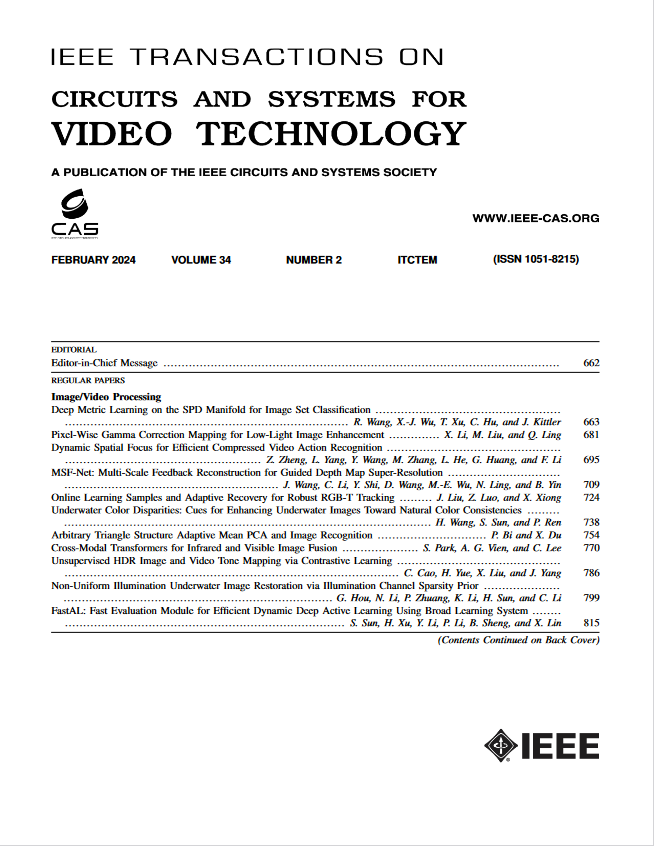FDCE-Net: Underwater Image Enhancement With Embedding Frequency and Dual Color Encoder
IF 8.3
1区 工程技术
Q1 ENGINEERING, ELECTRICAL & ELECTRONIC
IEEE Transactions on Circuits and Systems for Video Technology
Pub Date : 2024-10-17
DOI:10.1109/TCSVT.2024.3482548
引用次数: 0
Abstract
Underwater images often suffer from various issues such as low brightness, color shift, blurred details, and noise due to light absorption and scattering caused by water and suspended particles. Previous underwater image enhancement (UIE) methods have primarily focused on spatial domain enhancement, neglecting the frequency domain information inherent in the images. However, the degradation factors of underwater images are closely intertwined in the spatial domain. Although certain methods focus on enhancing images in the frequency domain, they overlook the inherent relationship between the image degradation factors and the information present in the frequency domain. As a result, these methods frequently enhance certain attributes of the improved image while inadequately addressing or even exacerbating other attributes. Moreover, many existing methods heavily rely on prior knowledge to address color shift problems in underwater images, limiting their flexibility and robustness. In order to overcome these limitations, we propose the Embedding Frequency and Dual Color Encoder Network (FDCE-Net) in our paper. The FDCE-Net consists of two main structures: 1) Frequency Spatial Network (FS-Net) aims to achieve initial enhancement by utilizing our designed Frequency Spatial Residual Block (FSRB) to decouple image degradation factors in the frequency domain and enhance different attributes separately; 2) To tackle the color shift issue, we introduce the Dual-Color Encoder (DCE). The DCE establishes correlations between color and semantic representations through cross-attention and leverages multi-scale image features to guide the optimization of adaptive color query. The final enhanced images are generated by combining the outputs of FS-Net and DCE through a fusion network. These images exhibit rich details, clear textures, low noise and natural colors. Extensive experiments demonstrate that our FDCE-Net outperforms state-of-the-art (SOTA) methods in terms of both visual quality and quantitative metrics. The code of our model is publicly available at:求助全文
约1分钟内获得全文
求助全文
来源期刊
CiteScore
13.80
自引率
27.40%
发文量
660
审稿时长
5 months
期刊介绍:
The IEEE Transactions on Circuits and Systems for Video Technology (TCSVT) is dedicated to covering all aspects of video technologies from a circuits and systems perspective. We encourage submissions of general, theoretical, and application-oriented papers related to image and video acquisition, representation, presentation, and display. Additionally, we welcome contributions in areas such as processing, filtering, and transforms; analysis and synthesis; learning and understanding; compression, transmission, communication, and networking; as well as storage, retrieval, indexing, and search. Furthermore, papers focusing on hardware and software design and implementation are highly valued. Join us in advancing the field of video technology through innovative research and insights.

 求助内容:
求助内容: 应助结果提醒方式:
应助结果提醒方式:


